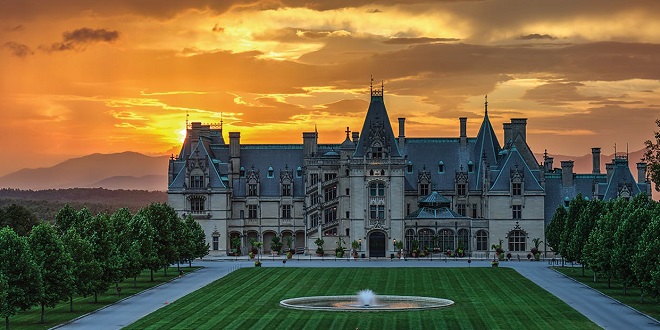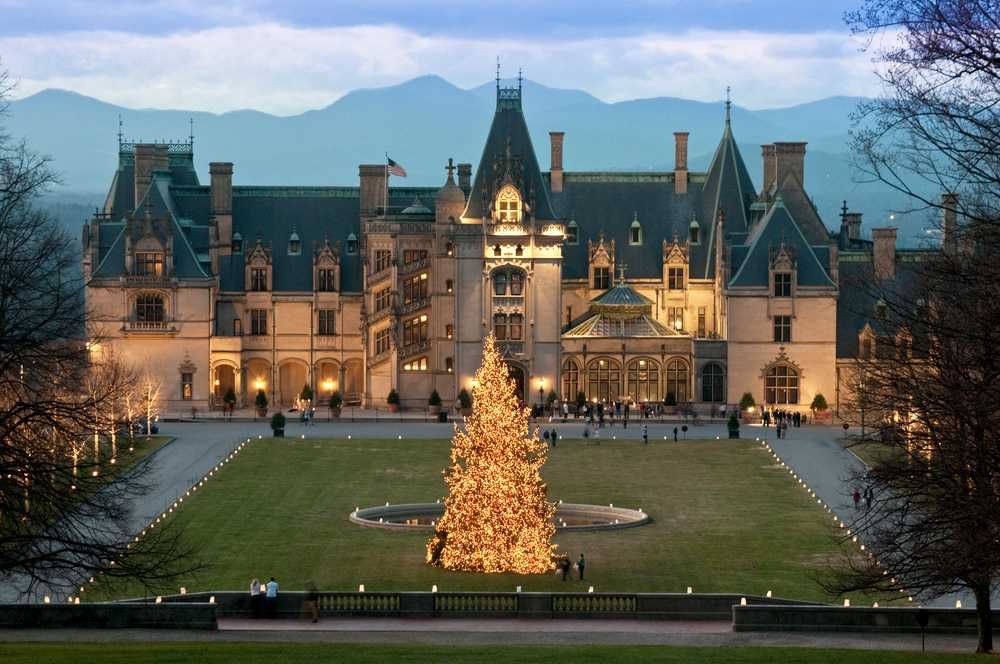The Biltmore Estate is one of the most iconic landmarks in the United States, drawing visitors from around the world to its stunning architecture, sprawling gardens, and rich history. However, in recent times, the estate faced an unexpected setback due to damage caused by Hurricane Helene. This has left many wondering about the Biltmore Estate reopening date and how the estate is managing recovery and restoration efforts.
In this comprehensive article, we will provide details on the damage caused by Hurricane Helene, the estate’s ongoing restoration process, and the anticipated reopening date. We’ll also explore the historical significance of the Biltmore Estate and why its return is eagerly awaited by both tourists and historians alike.
The Impact of Hurricane Helene on the Biltmore Estate
Hurricane Helene was an unpredicted force that brought widespread devastation to the Southeastern United States, including parts of Asheville, North Carolina, where the Biltmore Estate is located. The storm, which caused extensive flooding and strong winds, resulted in significant damage to the Biltmore Estate grounds, gardens, and some of its exterior structures. While the main mansion withstood the worst of the storm, the surrounding property and estate infrastructure did not escape unscathed.
Read Also: biltmore estate reopening date
What Was Affected?
- Gardens and Landscaping: The sprawling gardens, which are a key attraction at the estate, sustained considerable damage. The meticulously maintained flowers, trees, and other plantings were uprooted or destroyed by high winds and flooding. The estate’s world-renowned walled garden and Italian garden suffered damage that will take time to restore to their former beauty.
- Estate Grounds: The expansive estate grounds, which include forests, hiking trails, and scenic pathways, were heavily impacted by debris, fallen trees, and erosion caused by flooding. Several areas are in need of repair to ensure the safety of visitors when the estate reopens.
- Outbuildings and Structures: While the main mansion and the Biltmore House itself remained largely intact, several outbuildings, including the Stables, Antler Hill Village, and parts of the estate’s infrastructure, suffered damage. Roofs were damaged, windows were broken, and several structures required immediate attention.
Restoration Efforts and Challenges
Since the hurricane, the Biltmore Estate staff and restoration teams have been working tirelessly to assess the full extent of the damage and begin recovery. However, restoring a property of this size and historical significance is not a straightforward task. The estate covers over 8,000 acres, and the intricate design of its gardens, trails, and buildings means that restoration requires both time and expertise.
Immediate Repairs
The first phase of the recovery process involved clearing debris and securing damaged structures to prevent further harm. Crews worked to remove fallen trees and restore basic access to the estate’s primary areas. Given the age and historic nature of many of the estate’s buildings, teams of conservation experts have been carefully inspecting the integrity of the mansion and other structures to ensure that repairs are done according to the preservation standards necessary for a site of this importance.
Garden Restoration
One of the estate’s primary attractions is its stunning gardens, designed by famed landscape architect Frederick Law Olmsted. Given the damage to the plantings and overall landscape, restoration here is a meticulous process. Crews are working to replant lost trees, restore flower beds, and repair water features damaged by the storm. However, given the nature of seasonal planting and growth cycles, it may take several months before the gardens fully recover their previous splendor.
Historical Preservation
One of the challenges faced by the Biltmore Estate is the preservation of its architectural and historical significance. The estate is not just a tourist destination but a living piece of history that dates back to the Gilded Age. As such, restoration efforts require specialized knowledge to ensure that any repairs made do not detract from the estate’s original design and craftsmanship. Skilled artisans, carpenters, and preservationists are working closely with the estate’s staff to restore both the mansion and the surrounding structures to their former glory while respecting the estate’s historical integrity.
Anticipating the Biltmore Estate Reopening Date
As of now, there is much anticipation regarding the Biltmore Estate reopening date, with thousands of visitors eager to return to one of the most beloved tourist destinations in the U.S. While the estate’s staff has remained optimistic, they have also been cautious about providing an exact reopening timeline due to the complexity of the restoration efforts.
Tentative Reopening Timeline
Based on the most recent updates from estate officials, the Biltmore Estate is tentatively expected to reopen to the public in the late spring or early summer of the coming year. However, this timeline could be adjusted depending on the progress of the repairs, particularly in the estate’s gardens and more heavily damaged areas. The reopening will likely occur in phases, with certain sections of the estate becoming accessible before others.
For example, visitors may be able to explore the Biltmore House and some interior exhibits earlier than the outdoor gardens or more remote parts of the estate, which will require more time for recovery.
Read Also: biltmore estate reopening date
What to Expect at Reopening
When the estate reopens, visitors can expect a slightly different experience, at least initially. While the estate’s iconic mansion and much of its interior will likely remain unchanged, certain areas may still be undergoing restoration, particularly the gardens. The estate plans to offer special tours and exhibits focused on the restoration process, allowing visitors to see firsthand the efforts being made to preserve the Biltmore Estate’s legacy.
Furthermore, the estate may introduce new safety guidelines and visitor protocols in light of the hurricane damage to ensure that everyone can explore the property safely and responsibly.

The Importance of the Biltmore Estate’s Reopening
The Biltmore Estate is more than just a tourist attraction. It’s a national treasure, showcasing the opulence, architecture, and craftsmanship of the Gilded Age. Designed by George Washington Vanderbilt II and completed in 1895, the estate remains the largest privately-owned home in the U.S., offering a window into a bygone era of wealth, art, and culture.
Economic Impact
The Biltmore Estate reopening date holds significant importance for the local economy as well. As one of the top tourist destinations in North Carolina, the estate draws millions of visitors annually, contributing substantially to the local economy in Asheville and the surrounding region. Hotels, restaurants, and other local businesses rely heavily on the influx of tourists who come to visit the estate, and the prolonged closure due to Hurricane Helene has impacted many of these businesses.
With the reopening of the estate, the local economy is expected to see a boost, as visitors return to experience the beauty and history of the Biltmore Estate. This reopening will also help restore jobs to many employees who work at the estate, from tour guides and maintenance staff to gardeners and historians.
Cultural and Historical Significance
Beyond its economic impact, the Biltmore Estate plays a crucial role in preserving a significant piece of American history. Its reopening allows visitors to continue learning about the Vanderbilt family, their contributions to industry and culture, and the architectural innovations of the Gilded Age. The estate houses an extensive collection of art, antiques, and historic artifacts, making it a cultural institution in its own right.
As the estate recovers, its reopening will also offer an opportunity for reflection on the challenges of preserving historical landmarks in the face of natural disasters. The damage caused by Hurricane Helene is a reminder of the ongoing efforts required to maintain such landmarks and ensure that they remain accessible to future generations.
Looking Ahead: Future Plans for the Biltmore Estate
In addition to the restoration efforts currently underway, the Biltmore Estate has ambitious plans for the future. Once the estate has fully recovered from the hurricane damage, officials plan to introduce several new initiatives designed to enhance the visitor experience.
Expanded Exhibits
One such plan is the expansion of the estate’s museum exhibits. The Biltmore House is home to an incredible collection of art, furniture, and rare artifacts, and estate officials are planning to introduce new exhibitions that highlight previously unseen parts of the collection. Visitors will have the opportunity to learn more about the lives of the Vanderbilt family and the estate’s role in American history.
Sustainability Initiatives
The Biltmore Estate has also announced plans to expand its sustainability initiatives in the wake of the hurricane. The estate’s vast forests, gardens, and farmlands play a vital role in the local ecosystem, and officials are keen to implement measures that will help protect the estate from future natural disasters. This includes the planting of more trees, upgrading drainage systems to prevent flooding, and introducing environmentally friendly practices in the estate’s day-to-day operations.

Conclusion
The Biltmore Estate reopening date is eagerly anticipated by visitors and history enthusiasts alike. While Hurricane Helene caused significant damage to the estate, the ongoing restoration efforts are a testament to the estate’s resilience and its importance as a national landmark. As the reopening date approaches, visitors can look forward to returning to the Biltmore Estate and experiencing its grandeur once again.
The estate’s recovery also serves as a reminder of the importance of preserving historical landmarks and ensuring they remain protected for future generations to enjoy. Whether you’re a history buff, an architecture enthusiast, or



